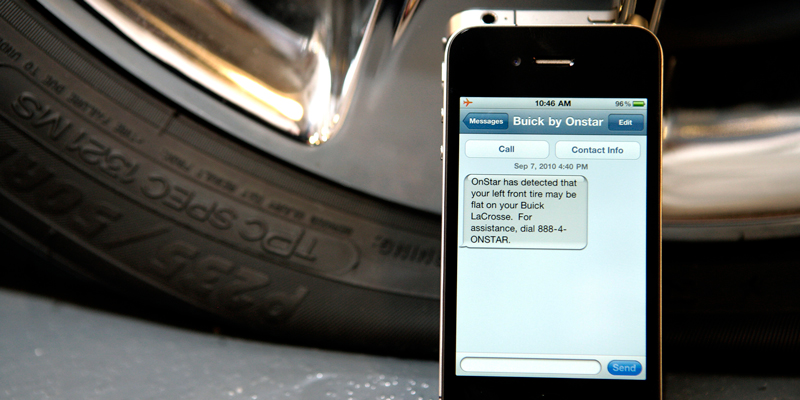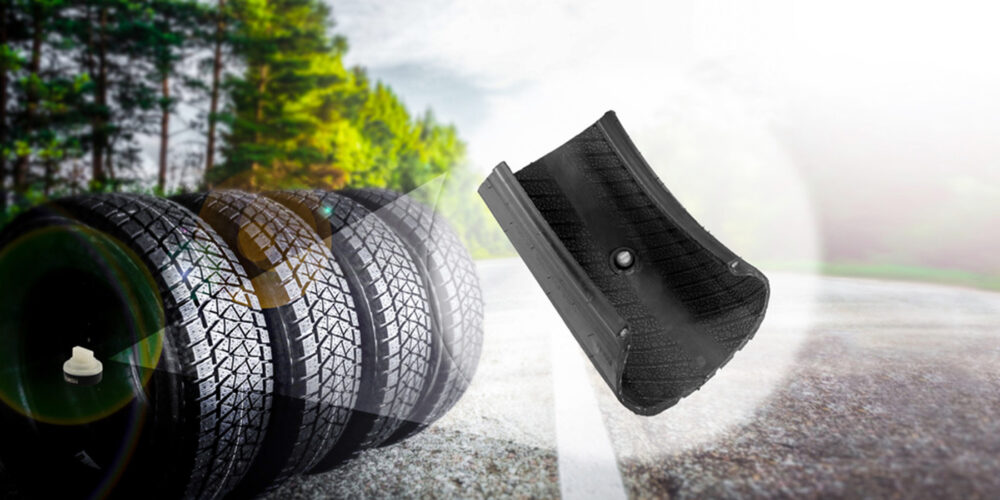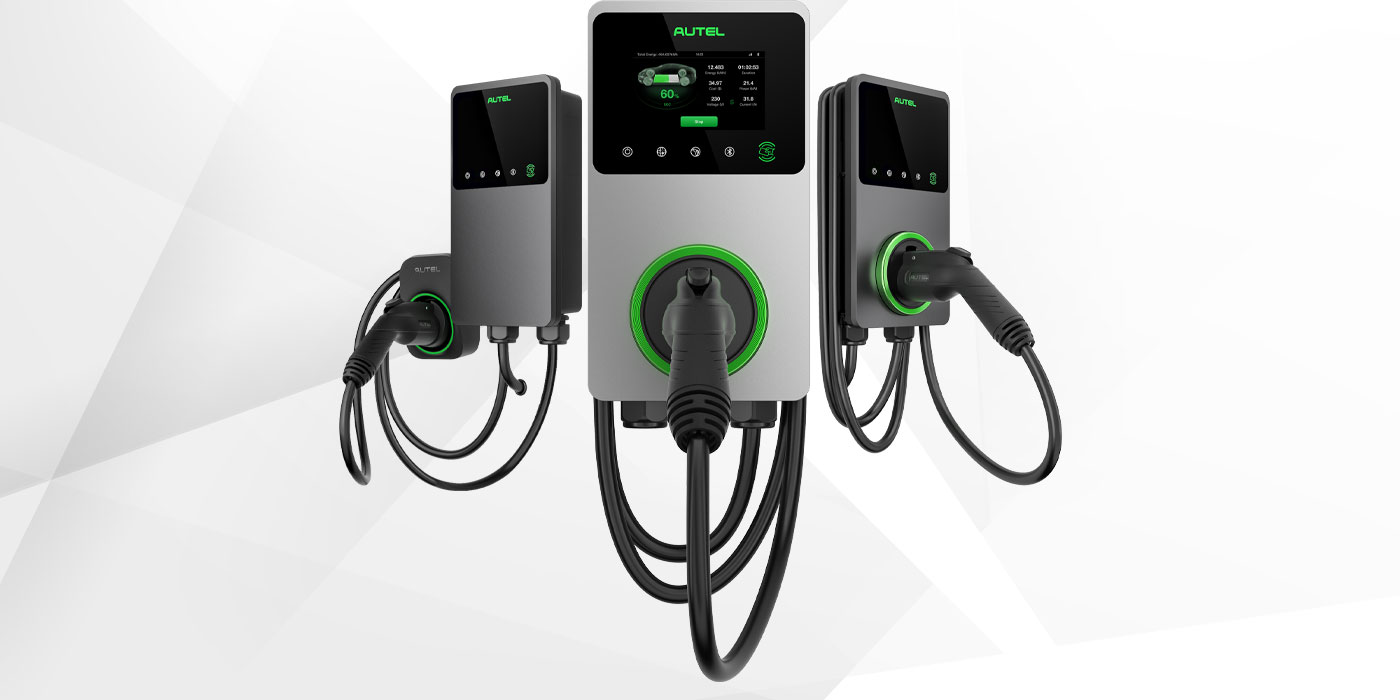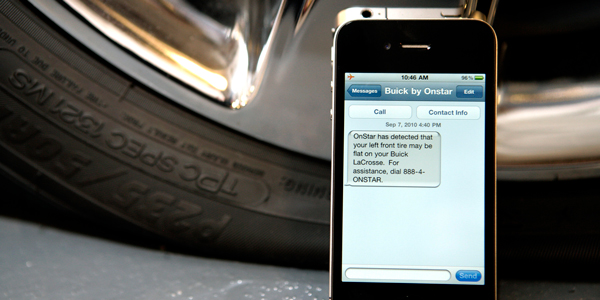
GM TPMS on Buick, Pontiac, Chevrolet, GMC Cadillac and Hummer models are some of the easiest to service if you have the right tools and knowledge. Shops should use a TPMS tool to reset the sensor positions after rotation. There is a method outlined in the owner’s manual to “match” the sensors that involves deflating a tire for eight seconds.
On vehicles without a driver information center, you will know you have a code set if, when you turn the key on but before starting the engine, the TPMS light blinks for one minute and then stays on solid. If that occurs, a TPMS problem exists and the system will have set a DTC.
A GM TPMS sensor includes pressure, temperature and acceleration sensors. The unit also has a radio transmitter, receiver and battery. Sensors have an estimated 10-year/150,000-mile (240,000 km) battery life.
On vehicles without a driver information center, you will know you have a code set if, when you turn the key on but before starting the engine, the TPMS light blinks for one minute and then stays on solid.
The antenna/receiver is the same one that is used for the keyless entry system. The antenna is typically sandwiched between the layers of glass in the front or rear glass, but some vehicles have a dedicated antenna mounted elsewhere.
The keyless entry module communicates with the TPMS sensors and relays the information with the Body Control Module (BCM) on the CAN BUS. If the keyless entry module is replaced, the sensors must be relearned; the same goes for the key fobs.
Each sensor has its own unique ID number. If a new sensor is fitted, the body control module must be reprogrammed with its unique ID and its position on the vehicle.
Each sensor takes a pressure measurement sample once every 30 seconds while in stationary mode. If the tire pressure increases or decreases by more than 1.2 psi from the last pressure measurement, another measurement will occur immediately to verify the change in pressure. If a pressure change has indeed occurred, the sensor transmits in Learn mode.
Each sensor has an internal low frequency coil. When the TPMS tool is used in Activate mode, it produces a low frequency transmission that activates the sensor. The sensor responds to a low frequency activation by transmitting in Learn mode.
When the TPMS antenna receives a transmission while in TPMS Learn mode, it will assign that sensor’s ID number to the location on the vehicle relative to the order in which it was learned.
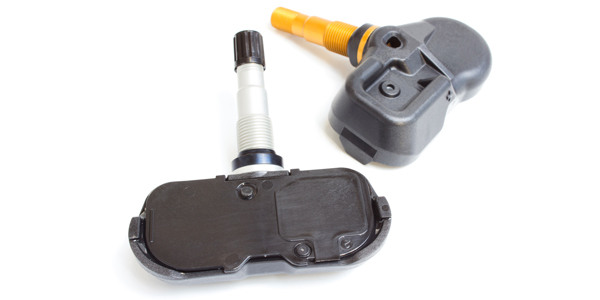
Relearn Tips
It is best to perform the TPMS relearn procedure away from the shop in the parking lot. This decreases the chance of other radio signals interfering with the relearn process.
Aim at the sidewall below the valve stem, and not at the stem itself. If you cannot get a sensor to initialize, try pushing the vehicle forward a foot or two. The signals can be blocked by components like rotors, calipers and knuckles. By repositioning the sensor, it may unblock the sensor. This is far more common on the front wheels.
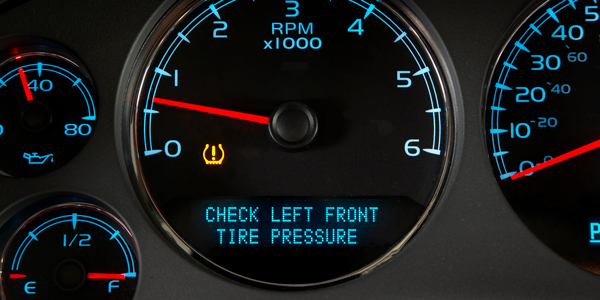
TPMS Sensor Matching
- Set the parking brake.
- Turn the ignition switch to ON/RUN with the engine off.
- Press and hold the keyless entry fob transmitter’s LOCK and UNLOCK buttons, at the same time, for about five seconds to start the TPMS learn mode. The horn sounds twice indicating the TPMS receiver is ready and in Learn mode.
- Starting with the left front tire, activate the sensor by holding the TPMS tool aimed upward against the tire sidewall close to the wheel rim at the valve stem location.
- Press and release the activate button and wait for a horn chirp.
- Once the horn chirp has sounded, the sensor information is learned and the turn signal in the next location to be learned will illuminate. On most models, the driver’s-side front turn signal also comes on to indicate that corner’s sensor is ready to be learned. Once the learn mode has been enabled, each of the sensors’ unique identification codes can be learned.
The Learn mode will cancel if the ignition is cycled to OFF, or if more than two minutes has elapsed for any sensor that has not been learned.
When a sensor ID has been learned, the module sends a serial data message to the BCM to sound a horn chirp. This verifies the sensor has transmitted its ID and has received and learned it. The module must learn the sensor IDs in the proper sequence to determine sensor’s location. The first learned ID is assigned to the left front location, the second to right front, the third to right rear and the fourth to left rear. On most models, the turn signals will individually illuminate indicating which location is to be learned next in the proper sequence.
The Learn mode will cancel if the ignition is cycled to OFF, or if more than two minutes has elapsed for any sensor that has not been learned. If the Learn mode is cancelled before the first sensor is learned, the original sensor IDs will be maintained. If the Learn mode is cancelled after not all of the sensors are learned, the following will occur:
It is best to perform the TPMS relearn procedure away from the shop in the parking lot. This decreases the chance of other radio signals interfering with the relearn process.
- All stored sensor IDs will be invalidated in the TPMS module memory.
- If equipped, the driver information center will display dashes instead of tire pressures.
- DTC C0775 will be set. These conditions will now require the learn procedure to be repeated for the system to function properly.
Check out the rest of the July digital edition of Tire Review here.

